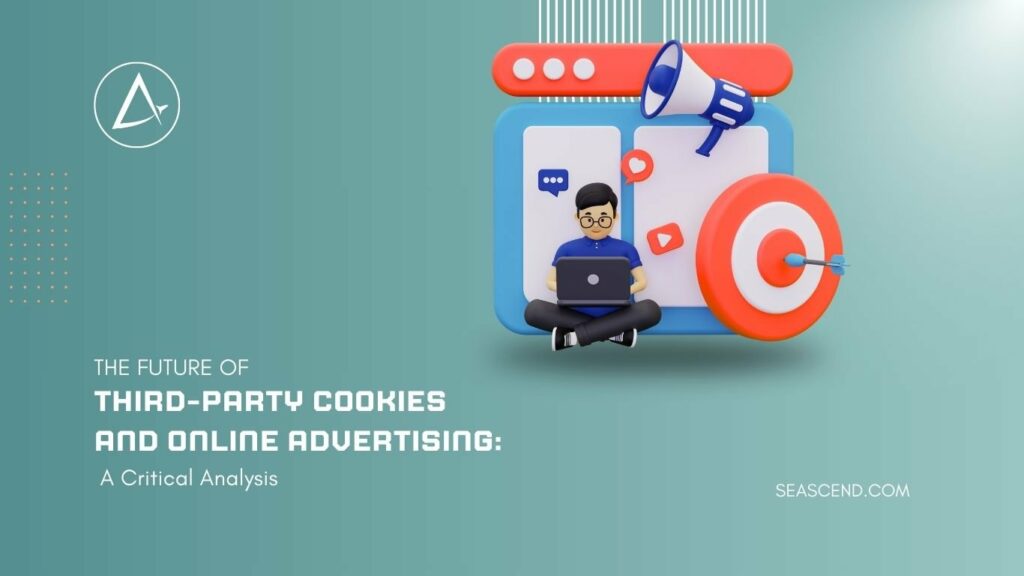
Google’s recent announcement to reverse its decision on phasing out third-party cookies has stirred considerable discussion within the digital advertising industry. Initially set to end support for these cookies in its Chrome browser, Google’s change of course signifies a substantial shift in the online advertising landscape. This article delves into the intricacies of this decision, analysing its implications for users, advertisers, publishers, and the future of digital privacy.
Breaking Down Barriers to Creation
Third-party cookies have been a cornerstone of online advertising for years. These small pieces of code, deposited into a user’s browser as they visit different websites, enable advertisers to track user behaviour across the web. This tracking capability allows for highly targeted advertising, tailored to the interests and behaviours of individual users.
In January 2020, Google announced its intention to eliminate third-party cookies in Chrome by early 2022. This decision was part of a broader initiative called “Privacy Sandbox,” aimed at enhancing user privacy while still allowing for effective advertising. However, due to various challenges and feedback from stakeholders, the timeline was pushed back multiple times. The most recent development, revealed in July 2024, confirms that Google will no longer proceed with this plan.
Key Components of Google's Decision
Privacy Sandbox Initiative
Launched to find privacy-friendly alternatives to third-party cookies, the Privacy Sandbox aimed to balance user privacy with the needs of advertisers. One significant proposal was the Federated Learning of Cohorts (FLoC), which would group users based on similar browsing behaviours rather than tracking individuals. This approach intended to maintain the efficacy of targeted advertising without compromising individual privacy.
However, FLoC faced substantial criticism from privacy advocates and regulatory bodies. Concerns were raised about the potential for new privacy risks, such as the identification of users within cohorts and the possibility of reinforcing harmful stereotypes. These challenges underscored the complexity of developing a viable alternative to third-party cookies that could satisfy all stakeholders.
Industry Feedback and Testing
Throughout the development and testing phases, Google received extensive feedback from advertisers, publishers, and regulators. This feedback highlighted the substantial work required to transition to new technologies and the potential disruptions to existing business models. For instance, many advertisers expressed concerns about the impact on their ability to deliver personalised ads and measure campaign effectiveness.
In response to this feedback, Google conducted extensive testing and iterative development of its proposed solutions. Despite initial confidence in the progress of the Privacy Sandbox, ongoing challenges and the need for further refinements led to multiple delays. The feedback loop with industry stakeholders proved critical in shaping the final decision to retain third-party cookies.
New User Experience
Instead of removing third-party cookies, Google plans to introduce a new user experience in Chrome, allowing users to make informed choices about their privacy settings. This approach aims to provide more control to users while maintaining the functionality that third-party cookies offer to advertisers.
The proposed user experience will include enhanced privacy controls, enabling users to understand and manage how their data is used across the web. This initiative reflects Google’s commitment to empowering users with greater transparency and control over their online privacy. By offering granular privacy settings, Google aims to address user concerns while ensuring the continuity of the digital advertising ecosystem.
Common Misconceptions
Misconception 1: Google is Eliminating All Cookies
Many believe Google’s decision impacts all cookies, including first-party cookies. However, the focus has always been on third-party cookies, which are used to track users across different websites. First-party cookies, which are specific to the website being visited, remain unaffected and continue to play a crucial role in user experience and site functionality.
First-party cookies are essential for various website functions, such as remembering user preferences, maintaining session states, and improving user experience. Unlike third-party cookies, which raise significant privacy concerns due to their cross-site tracking capabilities, first-party cookies are generally considered less intrusive and more acceptable from a privacy standpoint.
Misconception 2: Privacy Sandbox is Abandoned
While the decision to retain third-party cookies might suggest the abandonment of the Privacy Sandbox initiative, this is not the case. The initiative continues to develop privacy-enhancing technologies and alternatives, albeit without the immediate removal of third-party cookies.
The Privacy Sandbox remains a critical part of Google’s long-term strategy to improve online privacy. Despite the challenges and delays, Google continues to invest in the development of new technologies and frameworks that aim to enhance user privacy without compromising the effectiveness of digital advertising. The retention of third-party cookies is seen as a temporary measure to ensure stability while these new solutions are refined and implemented.
Case Studies and Examples
Impact on Small Businesses
Consider a small online retail business that relies heavily on targeted advertising to drive sales. The initial plan to remove third-party cookies posed a significant threat to its advertising strategy, potentially reducing the effectiveness of its ad spend. Google’s reversal offers a reprieve, allowing the business to continue leveraging third-party cookies while adjusting to future privacy enhancements.
Small businesses often lack the resources to quickly adapt to significant changes in digital advertising technologies. The retention of third-party cookies provides these businesses with additional time to prepare for future changes and explore alternative advertising strategies. This stability is crucial for maintaining their competitive edge in a rapidly evolving digital marketplace.
User Experience in Browsing
For the average user, third-party cookies often mean more relevant ads but also raise privacy concerns. Google’s new approach, offering more granular privacy controls, aims to empower users without abruptly disrupting their browsing experience or the advertising ecosystem.
Enhanced privacy controls will enable users to make more informed decisions about how their data is used. For instance, users will have the option to customise their privacy settings, choosing the level of data sharing they are comfortable with. This increased transparency and control can help build trust between users and the digital platforms they interact with, ultimately leading to a more positive online experience.

Expert Opinions
Anthony Chavez, VP of Privacy Sandbox at Google, stated, “Instead of deprecating third-party cookies, we would introduce a new experience in Chrome that lets people make an informed choice that applies across their web browsing, and they’d be able to adjust that choice at any time.” This highlights Google’s commitment to balancing user control with advertising needs.
Privacy advocate Jane Smith remarked, “While Google’s decision might seem like a step back for privacy, it reflects the complexities of the digital advertising ecosystem. Continuous improvement and transparent user controls are crucial.”
Industry expert John Doe commented, “The retention of third-party cookies provides a much-needed respite for advertisers and publishers. However, it’s essential that the industry continues to innovate and develop privacy-focused solutions that can eventually replace these cookies.”
Current Trends and Statistics
The digital advertising market is vast and continually evolving. As of 2023, global digital ad spend was projected to reach $517 billion. With third-party cookies facilitating a significant portion of this spend, Google’s decision ensures stability in this critical sector.
According to a 2022 survey by the Interactive Advertising Bureau (IAB), 65% of advertisers expressed concerns over the removal of third-party cookies, citing potential challenges in targeting and measurement. Google’s new direction addresses these concerns by maintaining the status quo while exploring privacy-enhancing alternatives.
The retention of third-party cookies is expected to have a stabilising effect on the digital advertising market. Advertisers can continue to rely on established methods for targeting and measurement, while also preparing for future changes. This approach allows for a more gradual transition to new privacy-focused technologies, reducing the risk of disruption to the advertising ecosystem.
Practical Implications
For advertisers and publishers, the continuation of third-party cookies means maintaining current practices without the immediate need for significant technological shifts. However, they must stay informed about future developments within the Privacy Sandbox initiative to prepare for eventual changes.
Advertisers should take this opportunity to explore alternative targeting and measurement strategies, such as contextual advertising and first-party data utilisation. By diversifying their approaches, they can mitigate the potential impact of future changes to third-party cookie usage.
Users will benefit from enhanced privacy controls, gaining more transparency and choice over their data. This approach aims to strike a balance between personal privacy and the benefits of targeted advertising.
The new privacy controls in Chrome will provide users with greater insight into how their data is used and the ability to manage their privacy settings. This empowerment can lead to increased user trust and engagement, as individuals feel more confident in their ability to protect their personal information.
Future Outlook
The future of online advertising and privacy is set to evolve with ongoing innovations within the Privacy Sandbox and other industry initiatives. Google’s decision reflects an adaptive strategy, responding to feedback and practical challenges. As privacy regulations tighten globally, companies must innovate to meet these standards while sustaining effective advertising models.
Emerging technologies, such as differential privacy and federated learning, promise to offer new ways to balance user privacy with the needs of the digital advertising ecosystem. These technologies could redefine how data is collected and utilised, providing a more privacy-conscious approach to online tracking.
Differential privacy techniques aim to protect individual user data by adding statistical noise to datasets, making it difficult to identify specific users while still allowing for useful analysis. Federated learning, on the other hand, enables machine learning models to be trained on user data without the data leaving the user’s device, thus enhancing privacy.
As these technologies mature, they have the potential to replace third-party cookies and other traditional tracking methods. The ongoing development and implementation of these solutions will require close collaboration between technology companies, advertisers, publishers, and regulators to ensure that they meet the needs of all stakeholders.
Conclusion
Google’s decision to retain third-party cookies marks a pivotal moment in the digital advertising landscape. While it offers temporary stability for advertisers and publishers, it underscores the complexities of balancing user privacy with commercial needs. The ongoing development of the Privacy Sandbox initiative and other privacy-enhancing technologies indicates a future where user control and privacy are paramount.
The digital advertising industry must remain adaptable, embracing new technologies and regulatory standards to ensure a sustainable and privacy-conscious future. As this landscape continues to evolve, stakeholders must prioritise transparency, innovation, and user empowerment to navigate the challenges and opportunities ahead.
By maintaining third-party cookies for the time being, Google provides the digital advertising ecosystem with the stability it needs to continue functioning effectively. However, the company’s commitment to developing and implementing privacy-enhancing technologies signals a clear intention to address the privacy concerns of users.
Advertisers, publishers, and other stakeholders must use this time to prepare for the eventual transition to new privacy-focused solutions. By staying informed and adaptable, they can ensure that they are ready to navigate the changing landscape of digital advertising and continue to deliver value to their audiences.
As users become more aware of and concerned about their online privacy, it is crucial for the industry to prioritise transparency and user control. By empowering individuals with the ability to manage their privacy settings and understand how their data is used, companies can build trust and foster a more positive online experience.
In conclusion, Google’s decision to retain third-party cookies represents a significant development in the ongoing dialogue between privacy and advertising. While it provides short-term stability, the future of digital advertising will undoubtedly continue to evolve as new technologies and regulatory standards emerge. By embracing innovation and prioritising user privacy, the industry can navigate these changes and ensure a sustainable and effective future for online advertising.
About Search Engine Ascend
Search Engine Ascend is a leading authority in the SEO and digital marketing industry. Our mission is to offer comprehensive insights and practical solutions to help businesses improve their online presence. With a team of dedicated experts, we provide valuable resources and support to navigate the ever-evolving landscape of digital marketing effectively.

